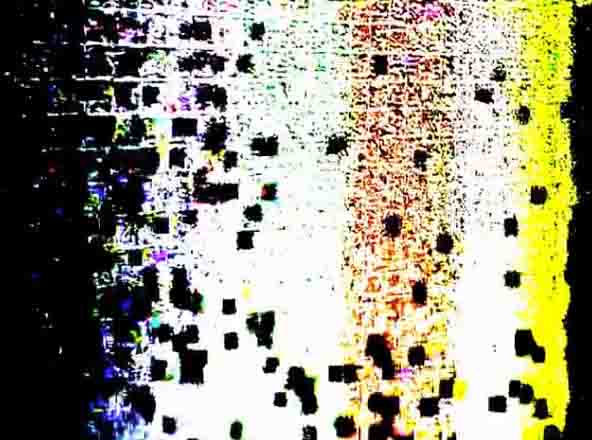
Courtesy of Sarah Fritchey
When Binwanka, the current Artist-in-Residence at Artspace New Haven, was in high school, he really wanted to make games for Nintendo.
“Back then, you’d see these items in the store and you’d think it was magic,” he said. “Once I figured out that people were creating these, I wanted to figure it out. That’s when I started to program computers — but of course, during the first computer programming class I ever took, the teacher said we wouldn’t be learning how to make games.”
Thirteen years after his first computer programming class, Binwanka made a ninja Super Mario game for Nintendo. But in addition to video game production, the artist has engaged in many forms of visual art over the course of his professional career, which will be showcased at Artspace New Haven from March 15 to March 29.
The planning process for Binwanka’s exhibit was quick and spontaneous. Sarah Fritchey, the curator at Artspace, said that during a recent visit with the artist, she realized that he has been making experimental video and sound work for about ten years.
Binwanka’s art has been posted on various internet platforms under an array of pseudonyms, but since he does not have a website, this material has never existed in one place. After her visit, Fritchey was inspired to install a brief, two-week exhibit showcasing Binwanka’s work.
The works on display will range from experimental video to sound and kinetic installations. The video works fall under a category of art called “glitch art” — the practice of using digital or analog errors for aesthetic purposes by deliberately manipulating electronics.
“One day in my apartment, I was playing Nintendo,” Binwanka said. “I went to get a cup of tea, accidentally knocked the Nintendo over and it made this interesting pattern on the screen. Since then, I’ve been causing accidents on purpose to make images.”
After Binwanka stumbled upon this genre of video art, he began experimenting with video manipulation using analog-style video synthesis software like Lumen. In some works, Binwanka spliced episodes of the 1960s anime series Astro Boy into the software, manipulating the video until it rendered an image he found compelling.
Like many artists, Binwanka’s works are informed by his experiences. While studying graphic design and game design at the University of Connecticut, Southern Connecticut State University and Parsons School of Design, he learned how to play orchestral music and played video games competitively. Binwanka mentioned that the improvisational skills he learned in orchestra affect how he approaches his artwork now.
One of the works in the exhibit, entitled “Senior Thesis Project,” was created after he knocked a Nintendo off of a table during a competitive video game match at the Chinatown Fair Arcade. He was drawn to the resulting image — an early example of Binwanka causing accidents in his art on purpose.
Another aspect of Binwanka’s works is his use of whatever materials are available. In a studio tucked into the back corner of Artspace, various drawings and paintings on paper of similar sizes are tacked on the walls, merely because he only bought one size of paper that week, he said. Binwanka noted that he often attempts to create compelling images with minimal materials and will ask himself what he can create with only a few colors of paint or a singular technique.
“He thinks about the internet as something that makes his practice possible,” Fritchey said. “He uses the tools at hand, like free software downloads online, video games, et cetera. He has this interest in making something from the stuff the universe has already made available.”
Fritchey also mentioned that the works on display will “recognize the flat-footedness of all technology” while “instilling great aesthetic joy” in this obsolescence. This recognition may be exemplified by a robot, constructed from Binwanka’s niece’s toy robot kit, to which he will affix pens. The robots will then roam the middle of the exhibit and create drawings from the paths they leave behind.
“There’s something in his work about an alternative knowing, or an alternative universe, but in the end, he will tell you that humans are the ones who created machines,” Fritchey said. “This is not work about paranoia or machine takeover — it’s work about what happens when you play a video game, and dust gets into it, and there’s a glitch. You have to blow into the cartridge, put it back into the game player, and hope it works.”
Artspace New Haven is located at 50 Orange Street and is open every Wednesday through Saturday.
Rianna Turner | rianna.turner@yale.edu







